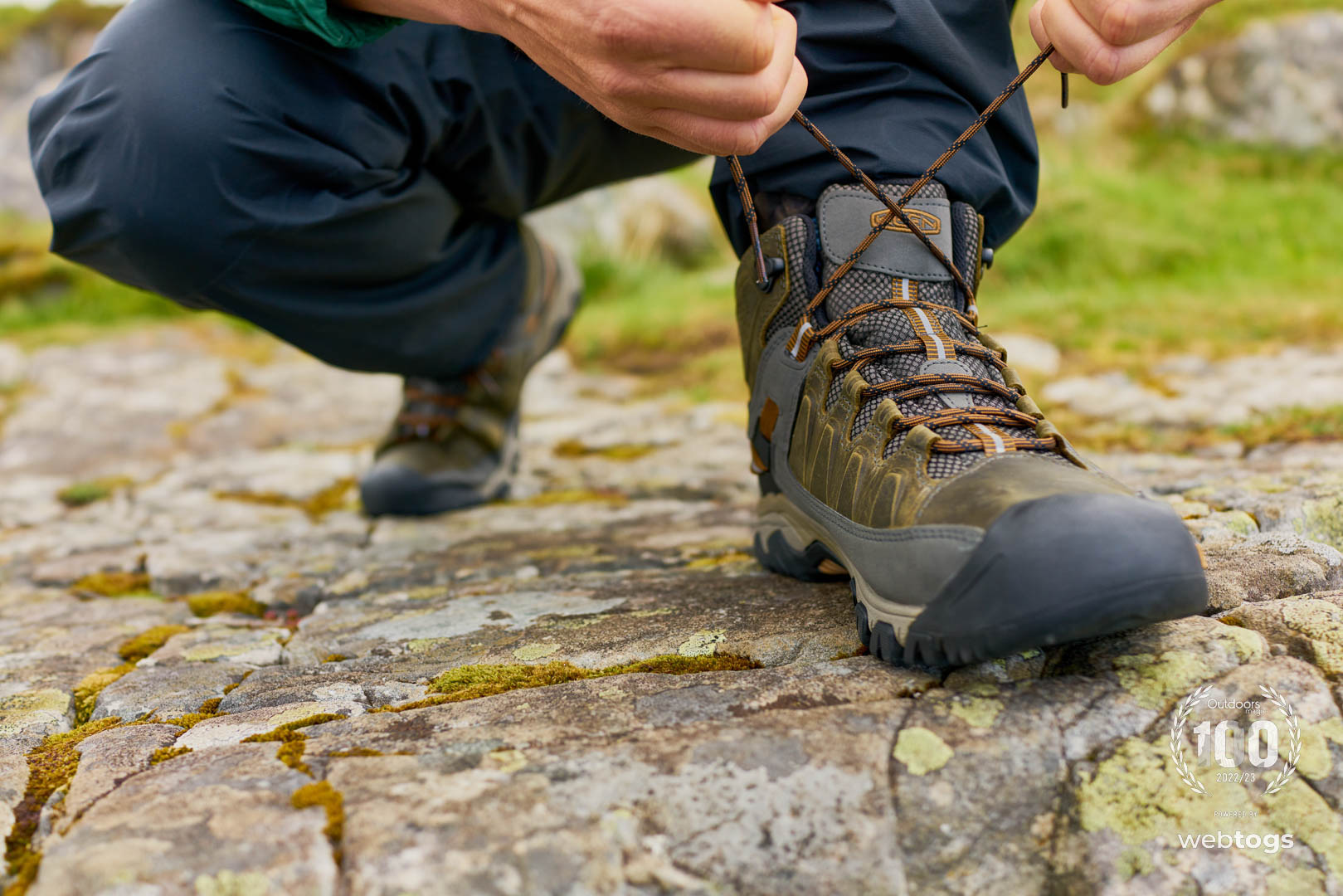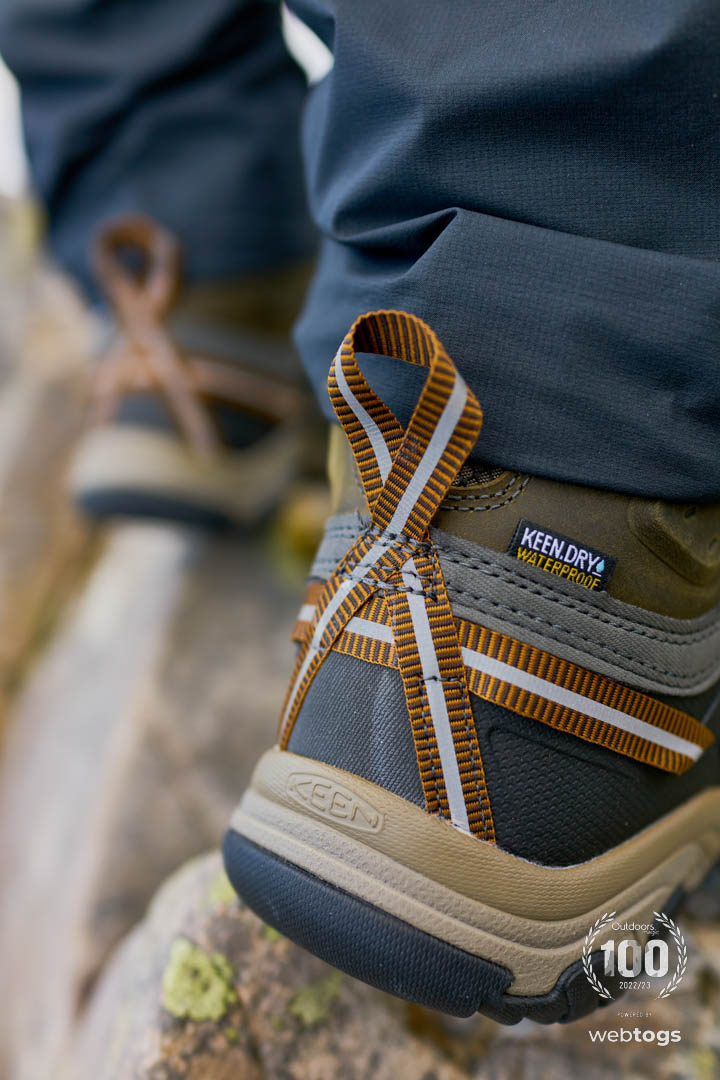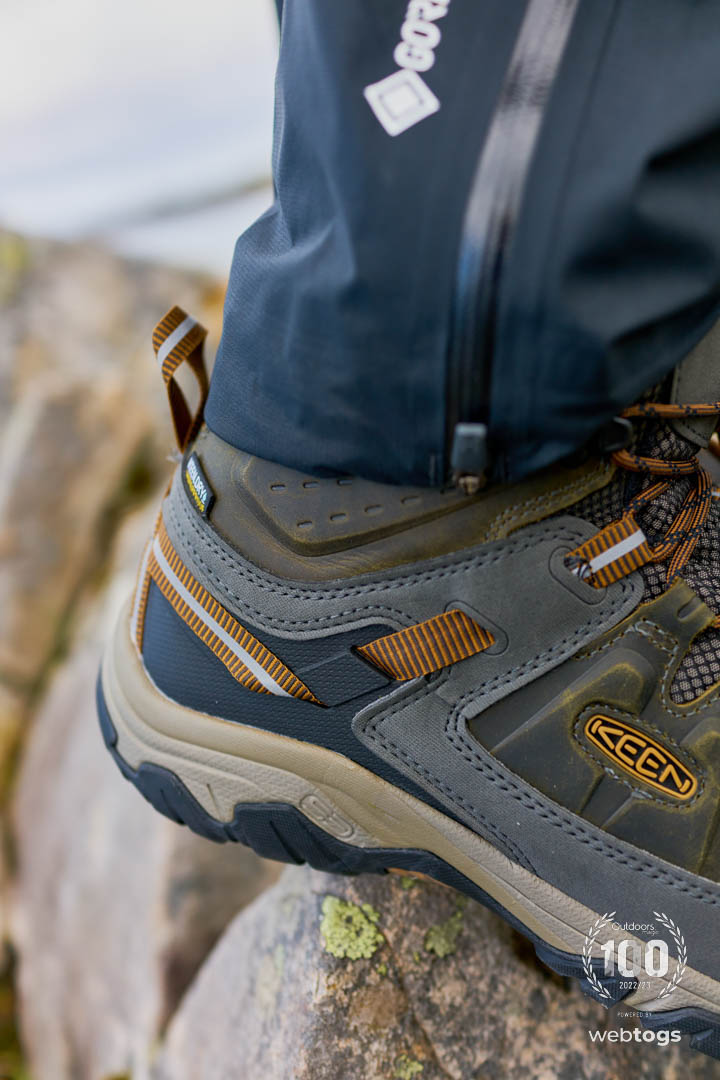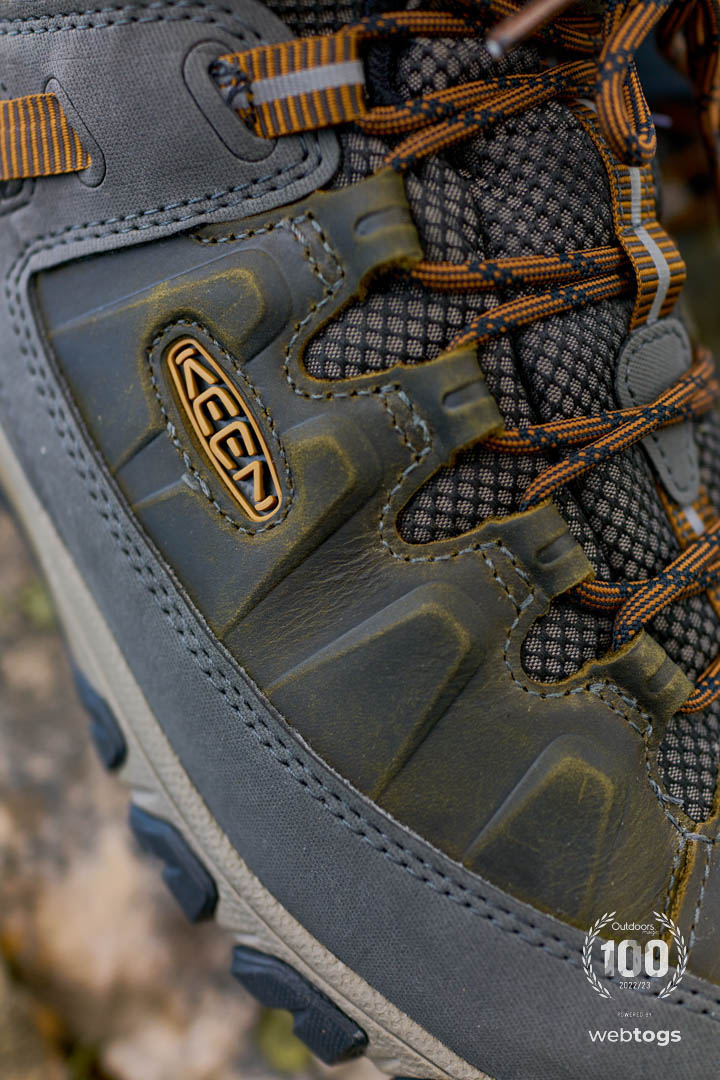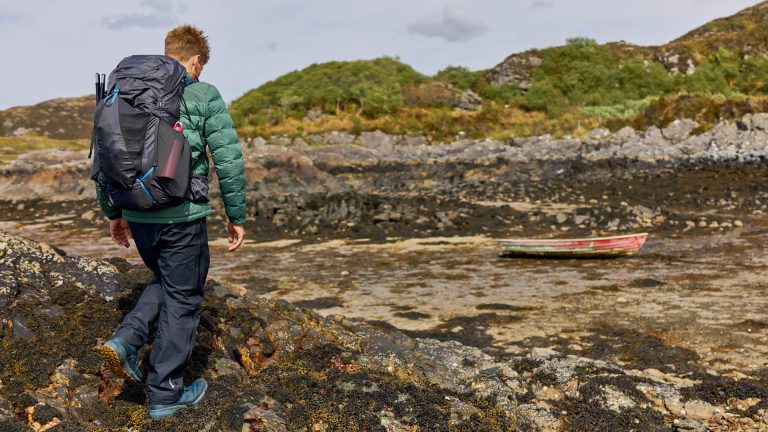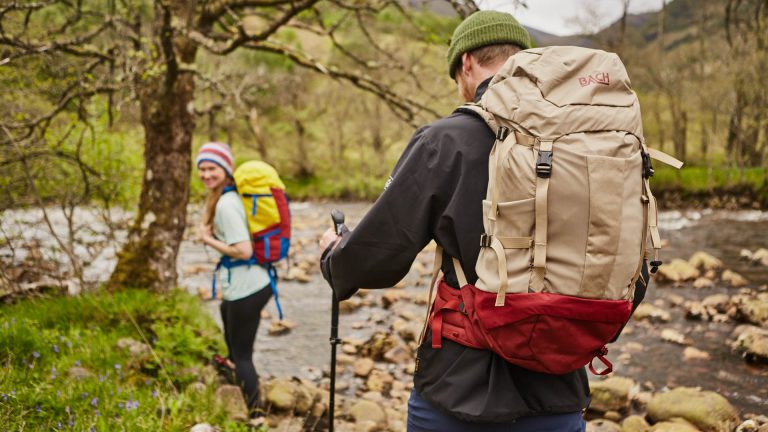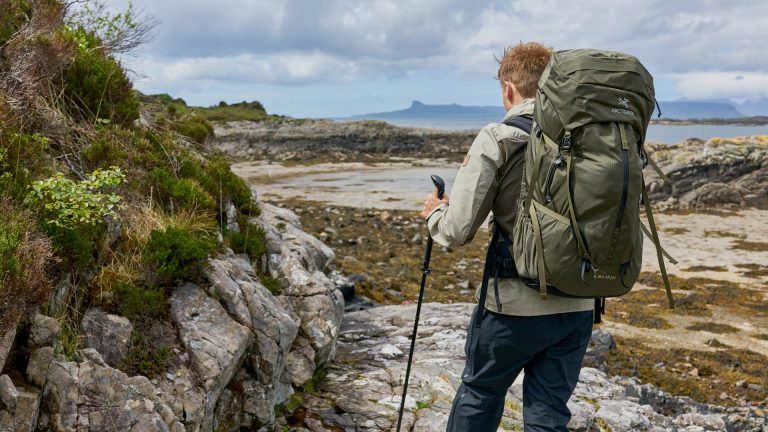Why We Chose The KEEN Targhee III Boots: Great value, accommodating fit, good build quality.
A perennial contender for ‘best budget boot’, KEEN’s Targhee is an accessible yet high-quality hiking boot. It’s deservedly popular here in the UK as well as across the pond, and not just because of its competitive price point.
This boot looks and feels like it should be much more expensive than it actually is. With genuine sustainably-sourced leather uppers and a chunky, rugged and adventure-ready build, it’s a great value package. There are also several variants, including low cut trail shoes and mid cut boots for men, women and even kids. While the older Keen Targhee II is still available, the newer Targhee III would be our pick for most hikers and hillwalkers – it has a more updated, contemporary style and a slightly more capable, performance-focused sole unit.
Who Are The KEEN Targhee III Boots For?
It would be unfair to say these are entry-level boots, not least because they are worn by plenty of experienced hikers with hundreds (if not thousands) of miles under their belts.
But if you are just getting into the great outdoors, these are a great choice as a first hiking boot. They have an accommodating fit that is likely to suit many different foot shapes, with supple and comfortable uppers that don’t need a lot of breaking in. They’re also pretty well built, so should deliver solid lifetime durability. The rugged toe bumper also does a good job of fending off trail debris if your footwork tends to be a little clumsy (hey, it happens to us all after a long, leg-sapping day on the trail).
And while this isn’t a performance-focused boot, it’s still pretty capable – easy to moderate hill walks won’t be a problem.
Materials and Construction
The Targhee III has a leather and performance mesh upper, with a quick dry lining and the brand’s own waterproof-breathable membrane to guard against wet feet. The lining is also treated with Eco Anti-Odour for natural odour control, while the leather is sourced from an LWG-certified tannery. This is treated with a PFC-free, durable water repellent finish.
Underfoot, there’s an EVA midsole for lightweight cushioning and a removable PU insole with an internal support mechanism – supposedly, “anatomically engineered to provide excellent arch support and cradle the natural contours of the foot”. We’re not sure about that, but it certainly feels less flimsy than the standard footbeds supplied with most walking boots.
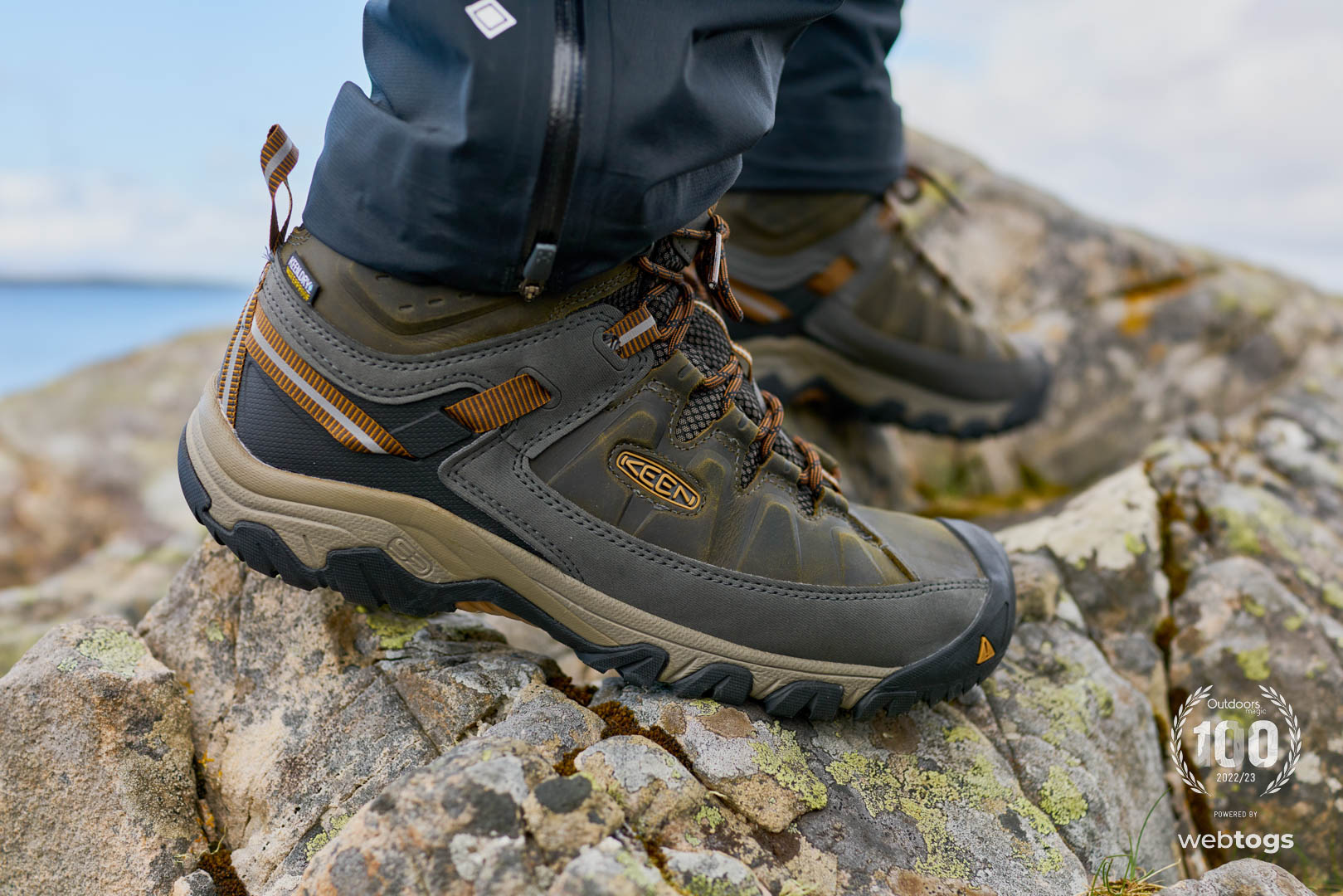
Lastly, the outsole has 4mm, multi-directional lugs for increased traction on a range of surfaces – though we’d expect most users will typically be walking fairly well-trodden paths in these boots.
Features
These boots have some useful tech to add support and stability while hiking. At the heel, an injected TPU overlay keeps things locked in, while an external ‘stability shank’ – a webbing strap that wraps around the foot to keep the boot pulled in tight – delivers lightweight support. This helps to eliminate the heel slip that can cause blisters, while also ensuring the heel section cradles the foot to avoid turning an ankle.
At the front of the boot, there’s a thick and chunky rubber toecap. This is a signature feature of most KEEN footwear, and while it can sometimes make their boots look a little ungainly, it’s undeniably practical, guarding against scuffs and bumps. This is not only a plus for durability, it also protects your feet from trail impacts – after all, there’s nothing worse than tripping over a tree root or stubbing your toes on a rock.
Conclusion
There’s little not to like here. When it comes to pure wearability and instant out-of-the-box comfort, the Targhees are some of the best boots out there. They have an accommodating fit that works for lots of different foot shapes. They’re also well-padded, comfortable and nicely cushioned underfoot.
Admittedly, this isn’t a particularly performance-focused boot. But that isn’t to say they aren’t up to the task for most everyday adventures. They’ll certainly take you most places that the average British hillwalker would want to go, and only really reach their limits on more demanding terrain.

